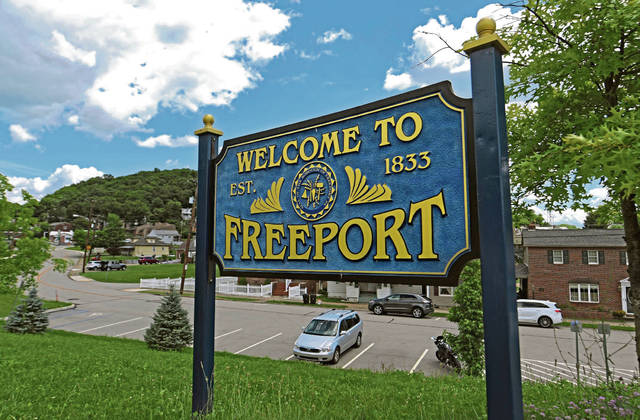Freeport officials trying to determine how to pay for sewage plant, make it affordable
Freeport Council has authorized its engineer to apply for grants to finance the estimated $15 million Freeport sewage plant construction project.
On Monday, council unanimously gave the green light for project engineer Kevin Creagh of KLH Engineers to start applying for as many grants as possible.
Creagh told council he projects the base bid for a new sewage treatment plant will be $12.3 million for actual construction. He said the $15 million figure takes into account inflation because of the pandemic and inspection and engineering fees. Creagh said he included an inflation projection to avoid surprises down the line.
“We had another client with a project that, in good times, the cost of it is $27 million. But now it’s $34 million due to covid inflation,” Creagh said.
He said that municipality is now in a holding pattern to give inflationary pressure a chance to cool down. Creagh believes that will occur by the fourth quarter of this year as the pandemic recedes.
Making plan affordable
Getting the right financing to comply with federal Environmental Protection Agency regulations appears to be the biggest hurdle for Freeport officials.
Creagh said EPA sets a benchmark, called the Affordability Index, for repaying the debt a community takes on in doing such projects. It’s based on what the sewage system’s users pay in rates — the primary source of funds to repay that debt. It’s designed to keep communities from taking on a debt load that results in too heavy of a financial burden for ratepayers.
The benchmark is 2% of whatever a community’s median income is. According to Creagh, Freeport’s median income is $42,250 per year; 2% of that is $845.
Broken down into 12 monthly rate payments, that comes to $70.42. That would include the current $35 base rate for 2,000 gallons of sewage.
That’s the figure council must stay under.
Creagh told council that Freeport’s application to PennVEST for state funding probably would yield about $11 million.
Realistically, he said, 25% of the project cost — about $3.75 million — would be what the borough would get in a PennVEST grant. Another $7.25 million could come in the form of a loan at 1% to be paid over 30 years.
“We can approach them about it, but I don’t think they are going to give you the entire $15 million,” Creagh said. “You’re not going to get turned down by PennVEST; you just may not get what you need.”
Other funding sources
That would require the borough to come up with the remaining $4 million of the $15 million projected cost.
Creagh said that would be raised through a bond issue or securing another grant from a different source, such as the state’s H2O Program.
Creagh outlined three financing scenarios, but all of them would exceed the federal government’s Affordability Index rate cap for monthly customer billing.
“Basically, if you take our current rate and add the number from any of these options, we’re over the $70.42 figure,” Councilman Justin DeAngelis noted. “I think we shoot for as much as we can, grant-wise.”
PennVEST is key to the whole situation, Creagh said.
“The more grant funding they can get from PennVEST makes it a more desirable project,” he observed.
Timing also is a part of it, he said. The PennVEST application will be submitted by November and the borough should have a response by December, he said.
“You’re not even going out for bids until early 2022, so I’m thinking that would take care of the covid inflation,” Creagh said.
Remove the ads from your TribLIVE reading experience but still support the journalists who create the content with TribLIVE Ad-Free.

